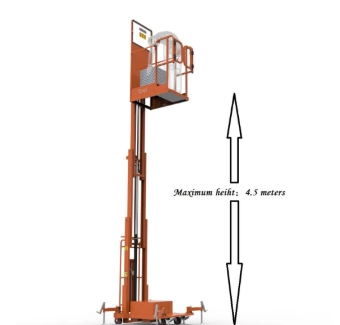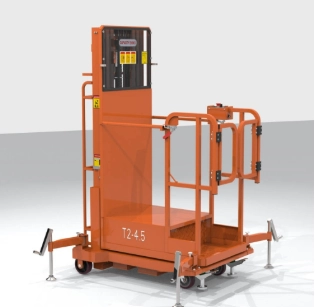How to Cut Warehouse Costs with Fully Electric Reclaimers
Running a warehouse is never cheap. Energy bills, staffing, maintenance, and safety measures all pile up, eating away at your budget. The real challenge is finding equipment that doesn’t just tick boxes on performance but actively helps you lower costs while keeping your team safe. That’s where modern reclaimer machines step in.
When you look at companies innovating in this space, one name worth highlighting is Hangzhou Jiequ Machinery Manufacturing Co., Ltd.. With years of industry experience, this manufacturer focuses on aerial work platforms, order pickers, and reclaimer solutions built for today’s demanding logistics environments. Their catalog is diverse, ranging from compact models for supermarkets to heavy-duty designs for industrial warehouses. What stands out is their ability to merge safety features with productivity, so you don’t have to compromise one for the other. By investing in advanced products such as the T3 Semi-electric Reclaimer, you position your operations for real efficiency gains. If you’re curious about their full product range or even want to get in touch directly, their product page and contact section make it easy to explore further.
This article will walk you through how fully electric reclaimers and semi-electric models reshape the way warehouses manage costs. From labor savings to reduced maintenance, the benefits are more than numbers on paper—they translate into smoother daily operations.
Why Do Labor Costs Drop with Fully Electric Reclaimers?
Manual picking and handling have always been labor-intensive. With traditional ladders or simple carts, workers spend time climbing, bending, and moving loads by hand. That doesn’t just slow down productivity—it also raises the risk of fatigue and accidents.
How Do Reclaimers Improve Efficiency?
Machines like the T3 Semi-electric Reclaimer cut out a large portion of manual strain. Instead of lifting or dragging goods, operators rely on powered lifting motors and precise control handles. For example, a unit with a maximum platform height of 4.5 meters lets one worker reach high shelves safely without needing a second person to stabilize ladders. This reduces the manpower needed for simple picking tasks, allowing you to reassign workers to higher-value activities.
How Does Energy Use Compare to Other Warehouse Equipment?
Many warehouse managers hesitate to invest in electric platforms because they think the power cost will be higher. But when compared with running forklifts or older hydraulic systems, electric reclaimers actually consume far less energy.
What Role Does Battery Technology Play?
Modern models often include 24V/120Ah battery systems that balance runtime with efficiency. Charging technology has advanced too—most come with 24V/15A chargers that make overnight charging simple. This reduces downtime and avoids the constant refueling costs of diesel-powered alternatives. Over a year, those small energy savings translate into thousands of dollars.
Can Safety Features Really Save You Money?
You may not think of safety as a direct cost saver, but accidents in warehouses are expensive. Medical bills, insurance claims, lost work hours—all add up quickly.
What Safety Additions Stand Out?
Devices such as anti-fall mechanisms, overload alarms, and anti-slip stair plates are built into modern reclaimers. For example, an anti-fall device prevents the platform from dropping suddenly if the mast gets stuck due to lubrication issues. These features aren’t just peace of mind—they reduce the likelihood of costly downtime and injury-related expenses.
How Does Maintenance Compare with Traditional Gear?
Old equipment like forklifts or manually built racks often require frequent servicing. Hydraulic leaks, broken ladders, and worn-out parts are common headaches.
Why Are Reclaimers Easier to Maintain?
Fully electric and semi-electric reclaimers generally have fewer moving parts compared with hydraulic systems. Their electric motors are efficient and need less upkeep. Since most models weigh between 560 and 682 kilograms, they balance sturdiness with ease of service. Components like electronic level devices and overload systems are designed for longevity, which lowers repair costs across the equipment’s lifespan.
What Extra Features Add Value?
Sometimes the smallest upgrades make the biggest difference in daily use.
How Does Customization Help?
Take the option to add a power outlet or an air pipe connector on the platform. This lets your workers use electric or pneumatic tools without climbing up and down repeatedly. Simple adjustments like choosing platform dimensions—often around 630mm by 690mm—help the equipment fit seamlessly into your existing warehouse layout. Even non-standard customization, like changing the color to match your facility, adds a layer of integration that supports worker comfort and efficiency.
Is It Worth Investing in Semi-electric Models?
You might wonder if a semi-electric version delivers enough benefits compared with a fully electric one.
When Should You Choose the T3 Semi-electric Reclaimer?
Semi-electric models strike a balance between cost and performance. For example, the T3 Semi-electric Reclaimer combines powered lifting with manual movement. This keeps the purchase price lower but still provides major labor savings and safety features. If your warehouse is medium-sized or your team handles lighter loads, a semi-electric machine might be the sweet spot for your budget.
How Does It All Add Up in the Long Term?
When you combine reduced labor, lower energy bills, fewer accidents, and minimal maintenance, the case for reclaimers is strong. The total cost of ownership matters more than the sticker price, and that’s where these machines shine.
FAQ
Q1: How much weight can a reclaimer handle?
A: Most models can safely lift up to 200–300 kilograms, depending on the configuration.
Q2: How long does the battery last on a single charge?
A: With a 24V/120Ah battery, you typically get a full shift of 6–8 hours, which suits daily warehouse operations.
Q3: What is the maximum working height of a reclaimer?
A: Platforms can reach up to 4.5 meters, making them ideal for standard warehouse shelving systems.
Q4: How do anti-fall devices work?
A: They lock the platform in place if the mast gets stuck mid-air, preventing sudden drops caused by wear or lubrication problems.
Q5: Can I customize the equipment to fit my warehouse?
A: Yes, you can request non-standard customization, such as adding tool outlets, adjusting dimensions, or selecting preferred colors.

